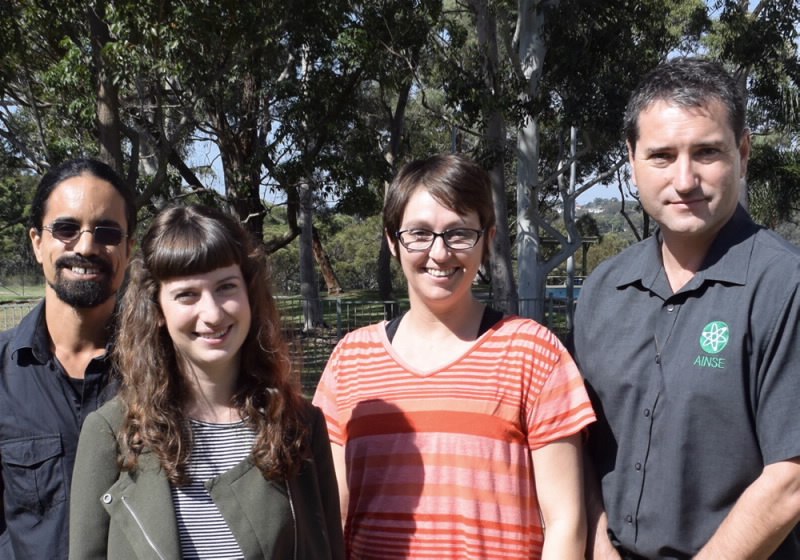Three young researchers with a passion for physics but different scientific disciplines shared highlights of their work on 14 April 2015. The speakers are recipients of AINSE Post Graduate Research Awards.
 |
| Tiago Freire, Emily Reynolds, Jimena Samper-Villarreal and Paul Di Pietro |
PhD candidate, Tiago Freire of Southern Cross University presented an overview of the latest techniques used to resolve the binding and leaching properties of modified bauxite refinery residue (MBRR), known as red mud or red sludge.
This solid waste is produced at a rate of 120 million tonnes a year in the refining of aluminium and is treated by a variety of neutralising methods, including seawater and acid-treatment, to reduce its hazardous properties.
This solid waste is produced at a rate of 120 million tonnes a year in the refining of aluminium and is treated by a variety of neutralising methods, including seawater and acid-treatment, to reduce its hazardous properties.
It is a very complex material composed of a wide range of elements and a minimum of 20 mineral phases. A high percentage of MBRRs appear amorphous under conventional techniques, making it difficult to attribute bulk properties to the component minerals. Freire said nuclear techniques can provide much higher resolution and information at the atomic scale.
By combining conventional and nuclear techniques, we can gain a greater understanding of the physical and chemical structures of MBRRs and mechanistic information about how metals bind to these materials. Understanding the properties of these poly-mineralic systems and how they interact with contaminants will facilitate environmental remediation and potential re-use.
Another PhD candidate Emily Reynolds from the University of Sydney has been studying the magnetism and structure of a new material, strontium ruthenium technetium oxide, a perovskite. Although the chemical compound was known it had not been synthesised, according to Gordon Thorogood, who noted the unusual combination of ferromagnetic (ruthenium) and antiferromagnetic (technetium) elements.
“Emily will be providing significant insight into the magnetic ordering of this material using the Wombat instrument,” said Thorogood. She elucidated that ruthenium and technetium occupy different positions which may result in a variation of the octahedral tilt. Perovskite materials are of great interest to industry because of their range of properties.
Jimena Samper-Villarreal, who is originally from Costa Rica and has previously worked on vegetated coastal habitats and coastal management, is now undertaking research on seagrasses in Moreton Bay, Queensland to complete her PhD. One of the reasons why seagrasses are of interest is because they can store carbon in their living tissue and in associated sediments.
Samper-Villarreal said Moreton Bay was selected as a site because of it being highly variable in environmental and seagrass parameters. She was interested in analysing the carbon content in seagrass meadows to determine if spatial variability in carbon storage was explained by factors including structural complexity, water turbidity, water depth, and wave height.
Another part of the research focused on determining if seasonal and historical variability of carbon storage in these meadows. The historical analysis was done at the Environmental Radioactivity Measurement Centre.


